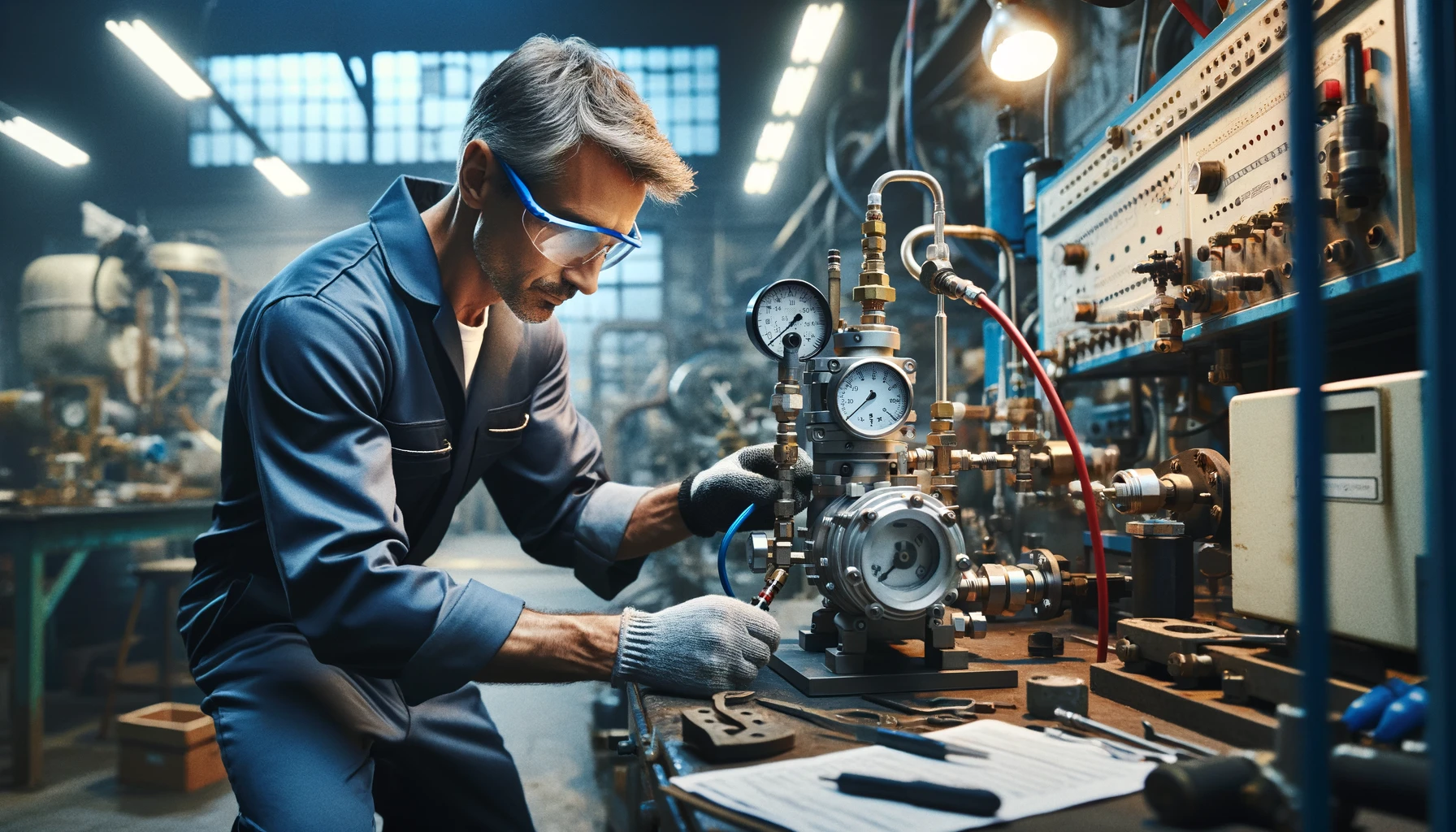In various industries and machinery, pressure sensors play a crucial role in ensuring optimal performance and safety. The pressure sensors detect and manage the air or liquid pressure in the machines to make them run safely and smoothly. Any issue with the pressure sensor can give inaccurate readings and that can be a bit dangerous. That’s why regularly calibrating the pressure sensor is very important and part of the regular maintenance schedule for the majority of industries. If you want to learn how to calibrate a pressure sensor, then you will find every bit of information about the same.
Table of Contents
ToggleWhat is a Pressure Sensor?
A pressure sensor is a sensor device that measures the force exerted by a liquid or a gas. You can find pressure sensors in daily devices like air pumps, tire pressure monitors, gas pipelines, refrigerators, and many others. They play important role in ensuring the safe and reliable operation of machinery which includes pressured gases or liquids as a major part of machinery.
Pressure sensors come in a variety of shapes, sizes, and technologies, each designed to meet the specific needs of the application. Some common types of pressure sensors include diaphragm, piezoelectric, and strain gauge sensors, each with its own unique characteristics.
What are the Benefits of Pressure Sensors?
#1 - Improved Safety
Accurate pressure monitoring can help prevent dangerous situations, such as overpressure or vacuum conditions, which could lead to equipment failure or even catastrophic accidents. The pressure sensors provide accurate readings and help technicians maintain recommended pressure levels for optimal functioning of the machine.
#2 - Enhanced Efficiency
Maintaining proper pressure inside the machine makes it more efficient and works smoothly. With the pressure sensor that provides accurate readings, the machine’s efficiency improves very much.
#3 - Machine Maintenance
The pressure sensors require regular maintenance and if you forget the machinery maintenance, then the irregular readings will help you to understand that the machinery requires the maintenance that it deserves.
#4 - Cost Savings
Maintaining the proper pressure is important in various machines as wrong pressure can cause the machine to overload and then increase the electricity and maintenance costs. With the pressure sensors, the appropriate pressure can be maintained and a lot of cost is saved.
How to Calibrate a Pressure Sensor?
The calibration process is universal but there might be some adjustments depending on the machines and pressure sensor types. In this section, you will find all of the steps for successful calibration.
1. Ensure that you have all the required tools and equipment ready before starting the calibration process. This will help you work efficiently and minimize the risk of errors or delays.
2. Now, check the current reading from the pressure sensors. This can be compared with the reference points to check if the sensor is providing accurate readings or not.
3. If the pressure readings seem off from the reference points, then it’s time to take off the pressure sensor from the machine.
4. Clean the pressure sensor thoroughly as per the instructions provided by the manufacturer.
5. After that, reinstall the sensor in the machine and then apply the zero pressure. The zero pressure is the starting point of the calibration process.
6. As per the manufacturer’s instructions, you can Zero the sensor to reset to the default levels.
7. Now, start applying the pressure slowly as per the calibration guide provided by the sensor manufacturer.
8. Keep measuring the sensor output to understand if the sensor is providing accurate readings or not.
9. Adjust the sensor span as per your needs to calibrate the right pressure values. This is important if the sensor is not providing accurate results.
10. Repeat the calibration process two to three times to ensure that the calibration is done perfectly.
11. Once done, you can be sure that the sensor is providing accurate results.
12. Document every reading and the appropriate timing for the other technicians to refer when doing maintenance.
Note: If the Sensor is damaged, then you should replace the same and do the basic calibration to ensure accurate readings.
Common Issues Faced While Calibrating a Pressure Sensor
While the process of calibrating a pressure sensor may seem straightforward, technicians and engineers often encounter various challenges during the procedure. Here are some common problems and their solutions:
#1 - Pressure Leaks
If there are pressure leaks in the machinery, then the sensor may provide wrong results anytime you check. Also, the sensor can provide wrong results when you can calibrate, so the entire calibration can go wrong, which is dangerous. That’s why it’s important to check for any leakage from the valves and pipes before proceeding with the calibration process.
#2 - Environmental Issues
Environmental factors, such as temperature, humidity, and electromagnetic interference, can affect the sensor’s performance and introduce errors during the calibration process. First, check the manufacturer guidelines for the affecting factors and take appropriate measures.
#3 - Data Management
Sometimes, the pressure sensor needs calibration regularly and the machine rarely needs maintenance. However as the technicians don’t document the calibration details, it becomes harder for the new technicians to understand if the sensor is calibrated or not.
That’s why it is important to use a calibration management software to log all the calibration details like date, time, zero pressure, highest pressure, sensor maintenance, sensor replacement, and next scheduled calibration date for better experience and improved safety.
Conclusion
The calibration of pressure sensors is a critical task that requires a methodical approach. In this post, we tried our best to share everything about the calibration process of pressure sensors. If you still have some questions or are facing any issues, feel free to use the comments section below.
I hope you like above blog. There is no cost associated in sharing the article in your social media. Thanks for reading!! Happy Learning!!


1 Comment